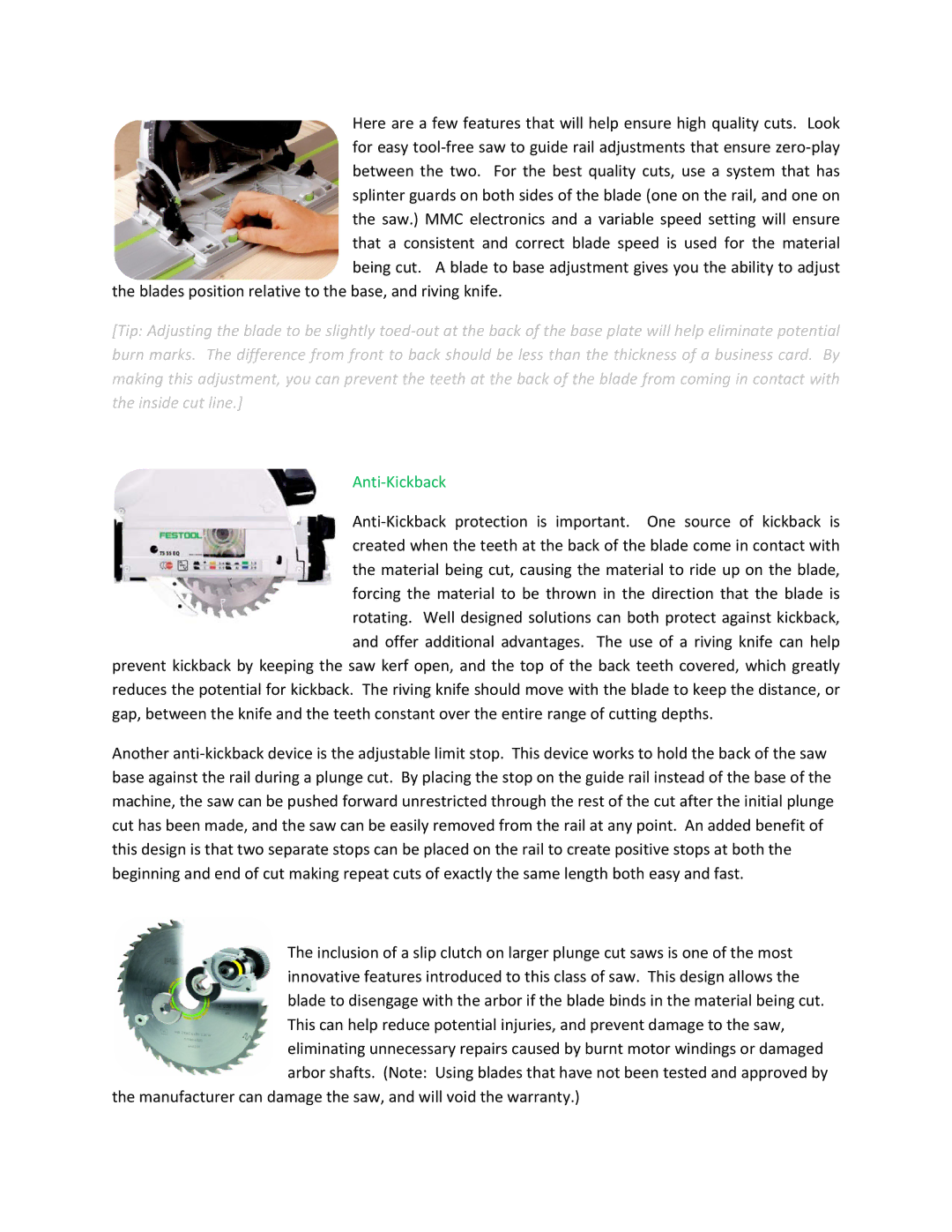
Here are a few features that will help ensure high quality cuts. Look for easy tool‐free saw to guide rail adjustments that ensure zero‐play between the two. For the best quality cuts, use a system that has splinter guards on both sides of the blade (one on the rail, and one on the saw.) MMC electronics and a variable speed setting will ensure that a consistent and correct blade speed is used for the material being cut. A blade to base adjustment gives you the ability to adjust
the blades position relative to the base, and riving knife.
[Tip: Adjusting the blade to be slightly toed‐out at the back of the base plate will help eliminate potential burn marks. The difference from front to back should be less than the thickness of a business card. By making this adjustment, you can prevent the teeth at the back of the blade from coming in contact with the inside cut line.]
Anti‐Kickback
Anti‐Kickback protection is important. One source of kickback is created when the teeth at the back of the blade come in contact with the material being cut, causing the material to ride up on the blade, forcing the material to be thrown in the direction that the blade is rotating. Well designed solutions can both protect against kickback, and offer additional advantages. The use of a riving knife can help
prevent kickback by keeping the saw kerf open, and the top of the back teeth covered, which greatly reduces the potential for kickback. The riving knife should move with the blade to keep the distance, or gap, between the knife and the teeth constant over the entire range of cutting depths.
Another anti‐kickback device is the adjustable limit stop. This device works to hold the back of the saw base against the rail during a plunge cut. By placing the stop on the guide rail instead of the base of the machine, the saw can be pushed forward unrestricted through the rest of the cut after the initial plunge cut has been made, and the saw can be easily removed from the rail at any point. An added benefit of this design is that two separate stops can be placed on the rail to create positive stops at both the beginning and end of cut making repeat cuts of exactly the same length both easy and fast.
The inclusion of a slip clutch on larger plunge cut saws is one of the most innovative features introduced to this class of saw. This design allows the blade to disengage with the arbor if the blade binds in the material being cut. This can help reduce potential injuries, and prevent damage to the saw, eliminating unnecessary repairs caused by burnt motor windings or damaged arbor shafts. (Note: Using blades that have not been tested and approved by
the manufacturer can damage the saw, and will void the warranty.)
